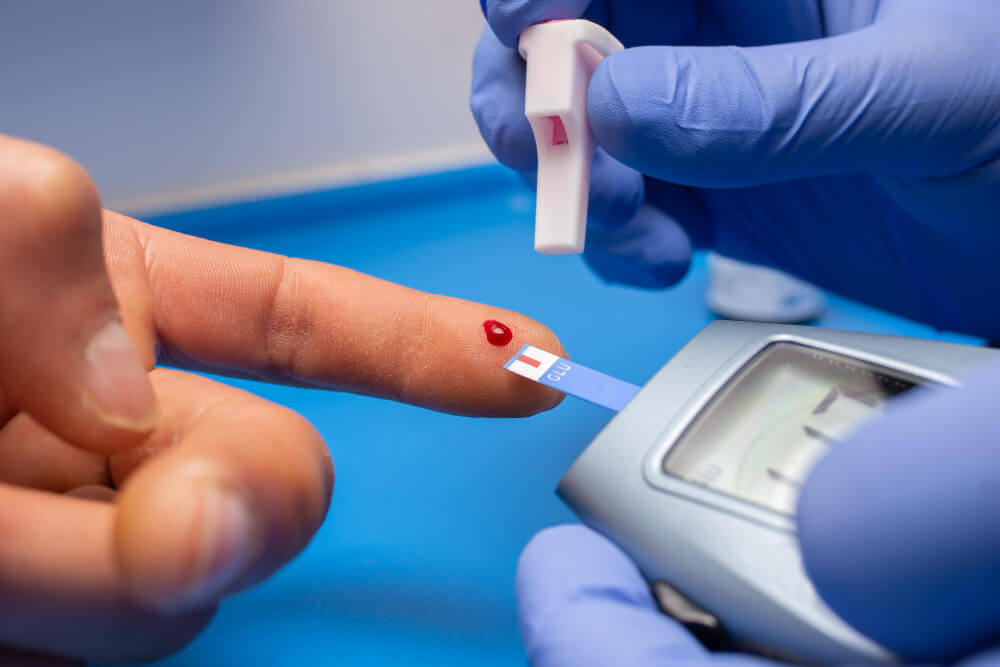Understanding HbA1c and Blood Sugar: Keys to Effective Diabetes Management
Living with diabetes requires constant attention to blood sugar levels. While finger pricks for blood glucose checks offer a snapshot of the present, they don’t reveal the bigger picture. This is where HbA1c steps in. This article delves into both HbA1c and blood sugar, explaining their roles in diabetes management and how they pave the way for effective treatment options.

HbA1c: A Long-Term View of Blood Sugar Control
HbA1c, also known as glycated hemoglobin, is a vital marker for people with diabetes. It reflects the average blood sugar level over a period of 2-3 months. Here’s how it works:
- Hemoglobin is a protein in red blood cells that carries oxygen throughout the body.
- When glucose (sugar) is present in the bloodstream, it attaches to hemoglobin, forming HbA1c.
- Higher blood sugar levels lead to more glucose attaching to hemoglobin, resulting in a higher HbA1c percentage.
Therefore, your HbA1c test result offers a long-term perspective on how well your blood sugar has been controlled.
Benefits of Understanding HbA1c
HbA1c testing provides several benefits for diabetic individuals:
- Tracks long-term control: Unlike blood sugar checks, which show a single point in time, HbA1c reflects average blood sugar levels over a longer period. This helps healthcare providers assess the effectiveness of current treatment plans and identify areas for improvement.
- Identifies early complications: Chronically high blood sugar can lead to diabetes complications. Regularly monitoring HbA1c helps identify potential issues early on, allowing for timely intervention.
- Motivational tool: Seeing your HbA1c results can be a powerful motivator to maintain healthy habits and stick to your diabetes management plan.
Interpreting HbA1c Results
The American Diabetes Association (ADA) recommends the following HbA1c targets for most adults with diabetes:
- Below 7.0% – Optimal control
- 7.0% to 7.8% – Good control
- Between 8.0% and 9.0% – Fair control
- Above 9.0% – Poor control (May require adjustments to treatment plan)
It’s important to note that these are general guidelines, and your target HbA1c level may be adjusted based on individual factors like age, overall health, and diabetes duration.
Blood Sugar: The Moment-to-Moment Picture
Blood sugar, also known as blood glucose, refers to the amount of glucose circulating in your bloodstream. Glucose is the primary source of energy for your body’s cells. It comes from the food you eat and is regulated by hormones like insulin.
Blood Sugar Monitoring: Why It’s Important
Blood sugar monitoring allows you to:
- Track responses to food: Regular blood sugar checks help you understand how different foods and activities affect your levels.
- Identify patterns: Monitoring can reveal patterns in your blood sugar fluctuations, allowing adjustments to medication or diet.
- Prevent complications: Keeping blood sugar within a healthy range can help prevent long-term diabetes complications.
How to Monitor Blood Sugar
Blood sugar is typically monitored using a finger prick test with a glucometer. Here’s what you’ll need:
- A glucometer: This device measures blood glucose levels from a small drop of blood.
- Test strips: These disposable strips are used with the glucometer to analyze the blood sample.
- Lancet device: This device holds a tiny lancet used to prick your finger for a blood sample.
The frequency of blood sugar monitoring varies depending on diabetes type, medication, and overall health. Your doctor will recommend a personalized monitoring schedule.
Blood Sugar Levels and Diabetes Management
Blood sugar levels can fluctuate throughout the day based on various factors, including:
- Food intake: Carbohydrates significantly impact blood sugar levels.
- Medications: Certain medications can raise or lower blood sugar.
- Physical activity: Exercise can help lower blood sugar levels.
- Stress: Stress hormones can elevate blood sugar levels.
Understanding these factors and their impact on blood sugar allows you to make informed decisions regarding your diet, activity level, and medication adherence.
Finding the Right Treatment Approach

HbA1c and blood sugar results guide your healthcare provider in choosing the most effective treatment options for your specific needs. These options may include:
Lifestyle Management
- Regular exercise: Physical activity helps your body use insulin more effectively, leading to improved blood sugar control. Aim for at least 150 minutes of moderate-intensity exercise or 75 minutes of vigorous-intensity exercise per week.
- Weight management: Maintaining a healthy weight can significantly improve blood sugar levels, especially for individuals with type 2 diabetes.
- Stress management: Chronic stress can raise blood sugar levels. Techniques like yoga, meditation, and deep breathing can help manage stress.
- Smoking cessation: Smoking raises blood sugar levels and increases the risk of diabetes complications. Quitting smoking significantly improves overall health and diabetes management.
Medications
Several medications can help manage blood sugar levels, including:
- Oral medications: These medications work in various ways to lower blood sugar, such as stimulating insulin production or inhibiting glucose absorption.
- Injectable insulin: For some individuals, particularly with type 1 diabetes, injectable insulin is necessary to regulate blood sugar levels. Different types of insulin act at various speeds to meet individual needs.
Blood Sugar Monitoring Technology
Advancements in technology offer new tools for blood sugar monitoring:
- Continuous glucose monitoring (CGM) systems: These devices provide real-time blood sugar data throughout the day, offering a more comprehensive picture compared to finger pricks.
- Insulin pumps: These devices deliver insulin continuously or in programmed doses, mimicking the body’s natural insulin release.
The choice of treatment options depends on various factors, including:
- Type of diabetes (type 1 or type 2)
- Individualized HbA1c and blood sugar goals
- Overall health and presence of other medical conditions
- Lifestyle and preferences
Working Together for Optimal Diabetes Management
HbA1c and blood sugar are two crucial pieces of the puzzle in managing diabetes. By understanding their roles and working closely with your healthcare team, you can create a personalized treatment plan that optimizes your blood sugar control and helps you live a healthy and fulfilling life.
Here are some key takeaways:
- HbA1c provides a long-term view of blood sugar control, while blood sugar checks offer a snapshot of the present moment.
- Both HbA1c and blood sugar results are vital for effective diabetes management.
- Regularly monitoring both HbA1c and blood sugar helps identify trends and adjust treatment plans as needed.
Remember, managing diabetes is a lifelong journey. By staying informed, making healthy choices, and maintaining open communication with your doctor, you can achieve successful blood sugar control and live a vibrant life with diabetes.
